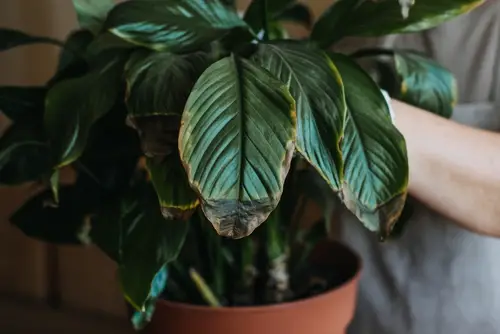White spots on pot leaves can be a sign of a variety of issues, ranging from harmless to potentially devastating. Understanding what causes these spots and how to identify them can help growers prevent and treat these problems before they can cause serious damage to their plants.
Common causes of white spots on pot leaves include fungal infections, such as powdery mildew, as well as infestations of pests like spider mites and aphids. These issues can be exacerbated by a lack of proper ventilation, high humidity levels, and poor growing conditions.
In some cases, white spots may also be caused by nutrient deficiencies or excesses, such as a lack of calcium or an overabundance of fertilizer.
Identifying the specific type of white spots on pot leaves is crucial for determining the best course of action. Different types of spots can indicate different issues, and some may require more aggressive treatment than others.
For example, powdery mildew can spread quickly and cause significant damage to plants if not treated promptly, while other types of white spots may be harmless and require no intervention.
More on this category:
- White Spots on Plant Leaves Outdoors
- White Spots on Philodendron Leaves
- White Spots on Peace Lily Leaves
Understanding White Spots on Pot Leaves
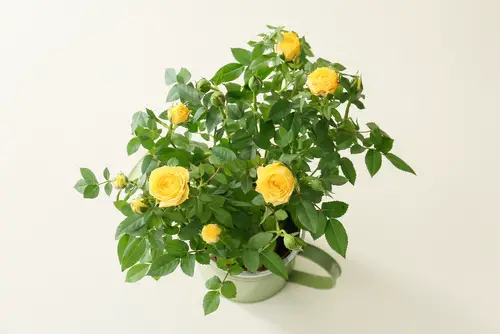
White spots on pot leaves can be a concerning sight for growers. These spots can be an indication of a range of issues, including fungal infections, pests, and nutrient deficiencies. Understanding the cause of the white spots is crucial to treating the issue and ensuring the health of the plant.
One of the most common causes of white spots on pot leaves is a fungal infection known as white powdery mildew. This fungus thrives in humid conditions and can cause white or gray patches to appear on the leaves. If left untreated, the fungus can spread and cause significant damage to the plant.
Another potential cause of white spots on pot leaves is pests such as spider mites or thrips. These insects can cause damage to the leaves, resulting in white spots or blemishes. It’s important to identify the pest and take appropriate measures to eliminate them before they cause significant damage to the plant.
Nutrient deficiencies can also lead to white spots on pot leaves. For example, a lack of nitrogen can cause yellowing of the leaves, which can appear as white spots. Similarly, a deficiency in phosphorus or potassium can cause browning or curling of the leaves, which can also appear as white spots.
White Spots on Pot Leaves – 5 Common Problems
White spots on cannabis leaves are a common problem that many growers face. These spots can be caused by a variety of factors, including pests, diseases, and environmental conditions. In this section, we will discuss some of the most common causes of white spots on cannabis leaves.
1. Fungal Disease
One of the most common reasons for white spots appearing on cannabis plants is due to a fungal disease. To be specific, this fungal disease is mildew, or specifically, white powdery mildew, also known as WPM.
In the early stages of a white powdery mildew infection, white spots will appear on the leaves of cannabis plants. If left untreated, the white spots can spread and cover the entire plant, causing significant damage.
2. Spider Mites
Spider mites are another common cause of white spots on cannabis leaves. These tiny pests feed on the sap of the plant, causing white spots to appear on the leaves. In addition to white spots, spider mites can also cause the leaves to become discolored and distorted.
3. Humidity

High humidity levels can also cause white spots to appear on cannabis plants. When the air is too humid, it can create the perfect environment for fungal growth, which can lead to white spots on the leaves. It is important to maintain proper humidity levels in the grow room to prevent this from happening.
4. Eggs
White spots on cannabis leaves can also be caused by the presence of eggs. Some pests, such as thrips and spider mites, lay their eggs on the leaves of the plant. These eggs can appear as small white spots and can eventually hatch into larvae, causing further damage to the plant.
5. Ants
Believe it or not, ants can also be a cause of white spots on cannabis leaves. Ants are attracted to the sweet, sticky residue left behind by aphids and other pests. As they move around the plant, they can leave behind small white spots on the leaves.
Identifying Different Types of White Spots
When it comes to identifying white spots on marijuana leaves, there are several possible causes. Understanding these causes can help growers address the issue and prevent further damage to their plants. Here are the most common types of white spots and how to identify them:
1. Mildew and Fungus
Powdery mildew is a common fungal disease that can affect cannabis plants. It appears as a white, powdery substance on the leaves, stems, and buds. In severe cases, the leaves may also turn yellow and fall off.
Fungus spores can also cause white spots on cannabis leaves. These spots may appear as small, circular patches that gradually grow larger and merge together.
2. Pest Infestation
Spider mites and other pests can cause white spots on cannabis leaves. These spots may appear as small, white dots that move around or as larger, irregular patches. In some cases, the leaves may also curl or become distorted. Regular inspection and treatment can help prevent pest infestations and minimize damage.
3. Nutrient Deficiencies

Nutrient deficiencies can also cause white spots on cannabis leaves. For example, a lack of potassium or sulfur can cause white spots to appear on the leaves. In some cases, the leaves may also turn yellow or brown. Growers should monitor nutrient levels and adjust their feeding regimen as needed.
4. Heat Stress
Heat stress can cause white spots to appear on cannabis leaves. This is because high temperatures can damage the plant’s cells and cause them to die off. The spots may appear as small, white dots or as larger, irregular patches. Growers should monitor the temperature and humidity levels in their grow room and adjust as needed.
Specific Concerns for Cannabis Plants
Cannabis plants are susceptible to a variety of issues, and white spots on their leaves are a common concern among cannabis growers. These spots can be caused by various factors, including fungal diseases, pests, and environmental factors.
One of the most common causes of white spots on cannabis fan leaves is powdery mildew, a fungal disease that thrives in humid environments. This disease can spread quickly and cause significant damage to the plant if not treated promptly.
Cannabis growers should regularly check their plants for signs of powdery mildew, such as white fuzz spots on fan leaves, and take steps to prevent its spread.
Another potential cause of white spots on cannabis leaves is pest infestations, such as aphids or spider mites. These pests can cause damage to the plant’s leaves, resulting in white spots or discoloration.
Cannabis growers should monitor their plants closely and take steps to prevent pest infestations, such as using natural insecticides or introducing beneficial insects to the grow environment.
Environmental factors can also contribute to the development of white spots on cannabis leaves. For example, high humidity levels or inadequate ventilation can create the ideal conditions for powdery mildew to thrive.
Cannabis growers should ensure that their grow environment is properly ventilated and that humidity levels are kept within a healthy range to prevent the development of white spots on cannabis leaves.
Preventing White Spots
Preventing white spots on cannabis leaves is essential to ensure healthy growth and development of the plant. Here are some ways to prevent white spots:
1. Proper Watering Techniques

Overwatering or high humidity can cause fungal or bacterial infections that lead to white spots on cannabis leaves. Therefore, it is essential to water the plant correctly. Make sure to water the plant only when the top inch of soil is dry. Additionally, ensure proper drainage to prevent water from accumulating at the bottom of the pot.
2. Optimize Fertilizer Use
Over-fertilizing can lead to nutrient burn, which can cause white spots on cannabis leaves. Therefore, it is crucial to optimize the use of fertilizers. Use only the recommended amount of fertilizer and avoid using it during the flowering stage.
3. Monitor Grow Room Conditions
Maintaining the right conditions in the grow room is crucial to prevent white spots on cannabis leaves. Ensure proper airflow, temperature, and ventilation to prevent the growth of fungi and bacteria. Use a thermometer and hygrometer to monitor temperature and humidity levels.
4. Regular Monitoring
Regular monitoring of the plant is essential to catch any problems early on. Check the leaves for any signs of white spots, yellowing, or discoloration. Additionally, inspect the plant for any insects or pests that may cause damage.
Treatment Options for White Spots
When it comes to treating white spots on cannabis leaves, there are two main options: natural remedies and chemical solutions.
Natural Remedies
Many growers prefer to use natural remedies to treat white spots on their cannabis plants. Here are a few effective options:
- Neem oil: Neem oil is a popular natural remedy for treating white spots on cannabis leaves. It works by suffocating the pests that cause the spots. Simply mix neem oil with water and spray it on the affected leaves. Be sure to cover the entire leaf, including the undersides.
- Baking soda: Baking soda is another natural remedy that can help get rid of white spots on cannabis leaves. Mix one tablespoon of baking soda with one quart of water and spray the solution on the affected leaves. This will help reduce the pH of the leaves, making it difficult for the pests to survive.
- Potassium bicarbonate: Potassium bicarbonate is a natural fungicide that can help get rid of white spots on cannabis leaves. Mix one tablespoon of potassium bicarbonate with one gallon of water and spray the solution on the affected leaves. This will help kill the fungi that cause the spots.
Chemical Solutions
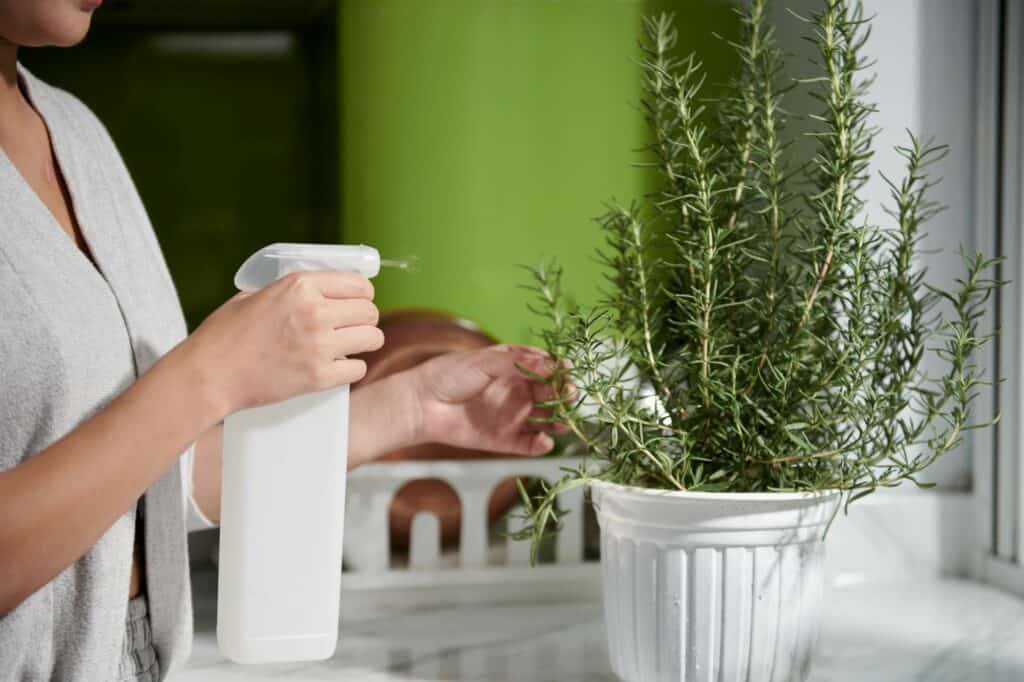
If natural remedies don’t work, growers may need to turn to chemical solutions. Here are a few options:
- Sulfur: Sulfur is a common chemical solution for treating white spots on cannabis leaves. It works by killing the pests that cause the spots. However, it can be harmful to beneficial insects, so use it with caution.
- Copper fungicides: Copper fungicides can also be effective at treating white spots on cannabis leaves. They work by killing the fungi that cause the spots. However, they can be harmful to the plant if used in excess, so be sure to follow the instructions carefully.
- Chemical insecticides: Chemical insecticides can be used to treat white spots on cannabis leaves, but they should be used as a last resort. They can be harmful to beneficial insects and can also leave harmful residues on the plant. If using a chemical insecticide, be sure to follow the instructions carefully and use it only as directed.
Prevention is always the best strategy for dealing with white spots on cannabis leaves. Regularly inspecting plants for signs of pests and diseases, maintaining proper humidity levels, and providing good air circulation can all help prevent white spots from forming in the first place.
Impact of White Spots on Plant Health
White spots on pot leaves can have a significant impact on plant health. These spots are typically caused by fungal diseases such as white powdery mildew or pests like aphids and spider mites. Here’s how white spots can affect different aspects of plant health:
1. Damage
White spots can cause damage to the leaves and overall plant health. The fungus or pest that caused the spots can weaken the leaves, making them more susceptible to breakage or other damage. This can lead to a reduction in the plant’s ability to photosynthesize and produce energy.
2. Yellow Leaves
White spots can also cause yellowing of the leaves. This is because the fungus or pest can interfere with the plant’s ability to absorb nutrients and water from the soil. As a result, the leaves may become yellow and eventually die off.
3. Brown Spots
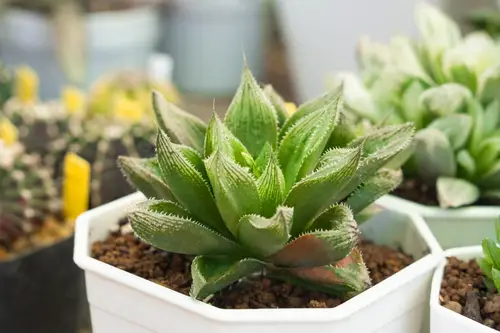
In addition to yellowing, white spots can also cause brown spots on the leaves. This is because the fungus or pest can cause the leaves to dry out and become brittle. Brown spots can also be a sign of a more serious fungal infection, so it’s important to take action as soon as possible.
4. New Leaves
White spots can also affect the growth of new leaves. If the fungus or pest is not treated, it can spread to new growth and cause damage to the plant. This can lead to stunted growth and a reduction in yield.
5. Photosynthesis
Finally, white spots can have a significant impact on the plant’s ability to photosynthesize. Photosynthesis is the process by which plants convert light energy into chemical energy, which they use to fuel growth and development.
If the leaves are damaged or yellowed, the plant may not be able to produce enough energy to support healthy growth.
Maintaining Healthy Pot Leaves
To ensure healthy pot leaves, growers must be vigilant in monitoring their crop for any signs of mold or disease. One common issue that can arise is the appearance of white spots on the leaves.
These spots can indicate a fungal disease or pest infestation, which can quickly spread and cause significant damage to the crop if left untreated.
To eliminate the risk of white spots on pot leaves, growers should take several preventative measures. First, it is essential to maintain a clean and sterile growing environment, as mold and pests thrive in damp and dirty conditions.
Regularly cleaning the growing area and equipment can help prevent the buildup of harmful bacteria and spores.
Another key step in preventing white spots on pot leaves is to monitor the humidity levels in the grow space. High humidity can create an ideal environment for mold and pests to thrive, so it is important to keep the humidity at a consistent and appropriate level.
In addition to preventative measures, growers should also be proactive in identifying and treating any signs of white spots on pot leaves. Inspecting the lower leaves and the underside of the leaves can help identify any issues early on.
If white spots are detected, growers should take immediate action to eliminate the problem before it spreads.
Conclusion
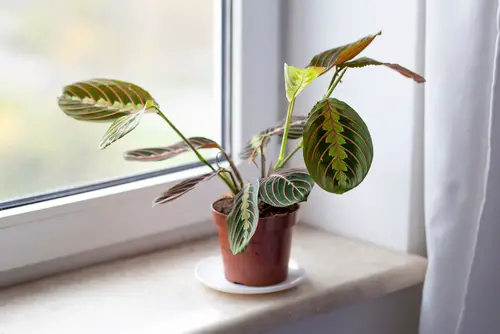
White spots on pot leaves can be caused by various factors, including fungal diseases like powdery mildew, pests like aphids and spider mites, and even nutrient deficiencies. It is essential to identify the underlying cause of the white spots to prevent further damage to the plant.
Preventive measures such as maintaining proper humidity levels, providing adequate ventilation, and avoiding overcrowding can help prevent the development of fungal diseases and pests. Regularly inspecting plants and removing any infected leaves can also help prevent the spread of diseases.
If white spots have already developed, there are various treatments available, including natural remedies like baking soda and vinegar solutions, neem oil, and insecticidal soaps. It is crucial to follow the instructions carefully and avoid using harsh chemicals that can harm the plant.
Frequently Asked Questions
What causes discoloration on pot leaves?
There are several reasons why your pot leaves may have white spots. One common cause is a fungal disease called powdery mildew. This disease appears as a white, powdery substance on the leaves and can spread quickly if not treated promptly.
Other causes of discoloration on pot leaves include pests, nutrient deficiencies, and environmental stress.
How do I treat white spots on my plant’s leaves?
The treatment for white spots on pot leaves depends on the cause. If the white spots are caused by powdery mildew, you can use a fungicide to treat the affected areas.
Neem oil and copper fungicides are effective treatments for powdery mildew. You can also try spraying a mixture of baking soda and water on the leaves. If the white spots are caused by pests, you can use insecticidal soap or neem oil to get rid of them.
Is it harmful if my pot leaves have white spots?
If left untreated, white spots on pot leaves can harm your plants. Powdery mildew can weaken your plants and reduce their yield. Pests can also damage your plants and reduce their overall health.
It’s important to identify the cause of the white spots and treat them promptly to prevent any further damage.
Can white spots on pot leaves spread to other plants?
Yes, white spots on pot leaves can spread to other plants. Powdery mildew can easily spread from plant to plant if not treated promptly. It’s important to isolate any infected plants and treat them to prevent the spread of the disease.
What are some common diseases that cause white spots on pot leaves?
Powdery mildew is the most common disease that causes white spots on pot leaves. Other diseases that can cause white spots include downy mildew, leaf spot, and botrytis.
Are there any preventative measures I can take to avoid white spots on my pot leaves?
Yes, there are several preventative measures you can take to avoid white spots on your pot leaves. First, make sure your plants are getting enough sunlight and air circulation.
Avoid overwatering your plants, as this can create a damp environment that is ideal for fungal growth. Keep your grow room clean and free of debris to prevent pests and diseases from taking hold.
Finally, make sure you are providing your plants with the proper nutrients they need to stay healthy and strong.

